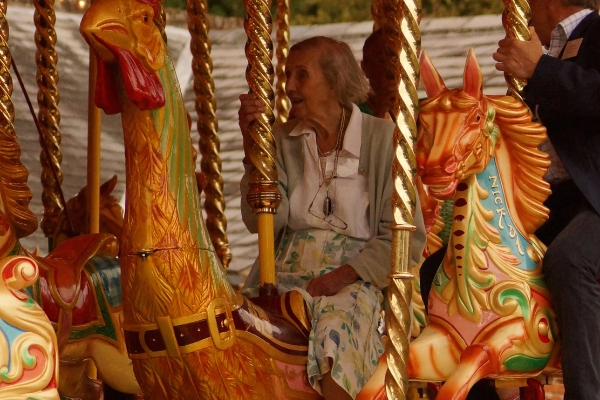
October 2018 saw the death, at the age of 91 of the remarkable Lady Smith, co-founder of the Landmark Trust and originator of its celebrated interiors.
On 24 May 1965 Christian Smith and her husband John signed the deed of trust creating a new charity, The Landmark Trust. Over the six decades that followed she would be intimately involved in the organisation, imparting to it something of her own original character along the way. The Smiths ran the Landmark Trust personally for many years and were closely involved in each and every decision about how it operated. From the first it had two aims, preserving buildings and promoting public enjoyment – the latter realised largely through letting Landmark’s newly restored historic buildings for holidays. If Sir John concerned himself mostly with the acquisition and repair of interesting and eclectic buildings, the furnishing and fitting out of them was Lady Smith’s domain.
Almost everything significant about their interior appearance of Landmarks was of Lady Smith’s choosing or devising; it was her taste that would give rise to the aesthetic cherished by generations of Landmarkers. She selected the ‘Old Chelsea’ china so familiar in Landmarks on a visit to Peter Jones in the 1960s, identifying it as just the sort of timeless pattern that would suit the buildings. It was when contemplating how to furnish the houses at Coombe in 1967 that she lighted on the idea of printing fabric specially for each one, informed by a device or feature from that place.
Together with artists Jennifer and Bob Packer she created printed fabrics for scores of Landmark buildings, each unique to that place and a reflection of its history and character. A talented poet herself, Lady Smith also took great trouble over the books in Landmarks, sharing with her friend Clayre Percy the task of choosing volume by volume just the right range of titles for each place.
A Scot, born and bred in Angus, Lady Smith helped ensure Landmark was a British, indeed a European enterprise. She personally drove the van of furniture almost 600 miles from Berkshire to Saddell Castle in Argyll, remembering, with characteristic humour and self-deprecation, how she drove straight into the castle’s historic gateway on arrival. Her sense of fun and of adventure imbued the Landmark experience from the first. She revelled in the amusing and exotic, the disappearance of the Fort Clonque causeway at high tide, the treacherous landings on Lundy before the construction of the jetty, the notion of a turreted bathroom reached across a leaded roof. She loved Landmark to the end, a stalwart of every Christmas party at the Shottesbrooke head office, keen always to meet new staff and supporters and to know what projects were afoot. Her favourite building she said was probably the Villa Saraceno, where the sensitivity of Landmark’s approach gave her particular pride. She was mystified, however, by the fuss about Landmark’s restoration of Astley Castle, which won the RIBA Stirling Prize. “‘Ghastly Castle’ I call it” was her beaming comment.
While Sir John Smith’s genius and generosity made Landmark possible and saw the salvation of scores of special buildings, it was Lady Smith’s touch and taste that made the buildings themselves such delightful places to inhabit. She was loved by all who knew her at Landmark and will be sorely missed.